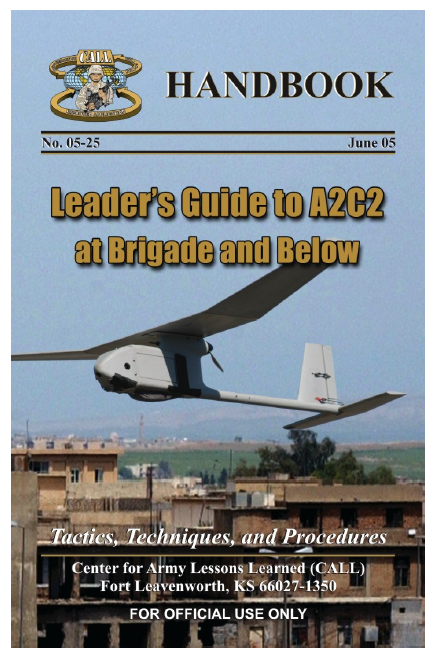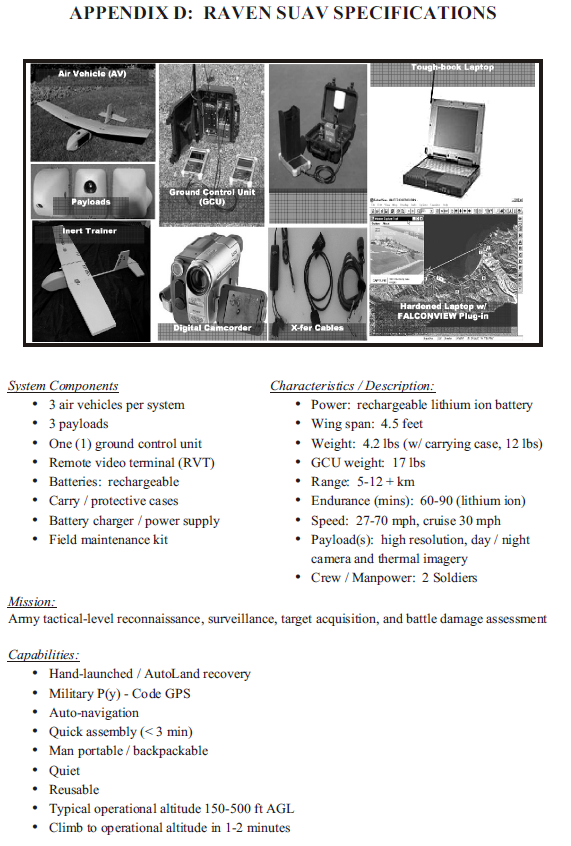LEADER’S GUIDE TO A2C2 AT BRIGADE AND BELOW
- 34 pages
- For Official Use Only
- June 2005
- 4.85 MB
The purpose of this handbook is to enhance understanding of Army airspace command and control (A2C2) to mitigate risks between small unit unmanned aerial vehicles (SUAVs) and rotary wing operations below the coordinating altitude. This handbook provides leaders at the brigade and below with guidelines in the form of airspace coordination techniques and procedures regarding SUAV mission planning and airspace deconfliction.
This handbook is the result of combining information from several sources, including Raven operators currently deployed in support of Operation Enduring Freedom and Operation Iraqi Freedom.
…
2. TYPES OF SEPARATION
There are three primary means of maintaining separation between manned and unmanned aircraft: lateral, time, and vertical separation. Beyond the need to ensure physical separation exists, leaders must plan for frequency separation between unmanned vehicles.
a. Lateral separation spaces aircraft that may be operating at the same altitude by not having them operate in the same geographic space. This can be done through the assignment of flight corridors, ROA/ROZ, and other graphic control measures such as phase lines and unit boundaries.
b. Time separation spaces aircraft that may be operating in the same geographic area or at the same operating altitudes by not allowing them to operate at the same time. Time separation may also be required when aircraft, manned and unmanned, must fly near indirect-fire trajectories or ordnance effects. The timing of surface fires must be coordinated with aircraft routing. This ensures that, even though aircraft and surface fires may occupy the same space, they do not do so at the same time.
c. Vertical separation spaces aircraft based on operating altitude or by assigning different operating altitudes to other aircraft that may be working in the same geographic area. Vertical separation is the least preferred method since SUAVs and rotary wing aircraft normally operate from the surface to 500 feet above ground level (AGL).
…


